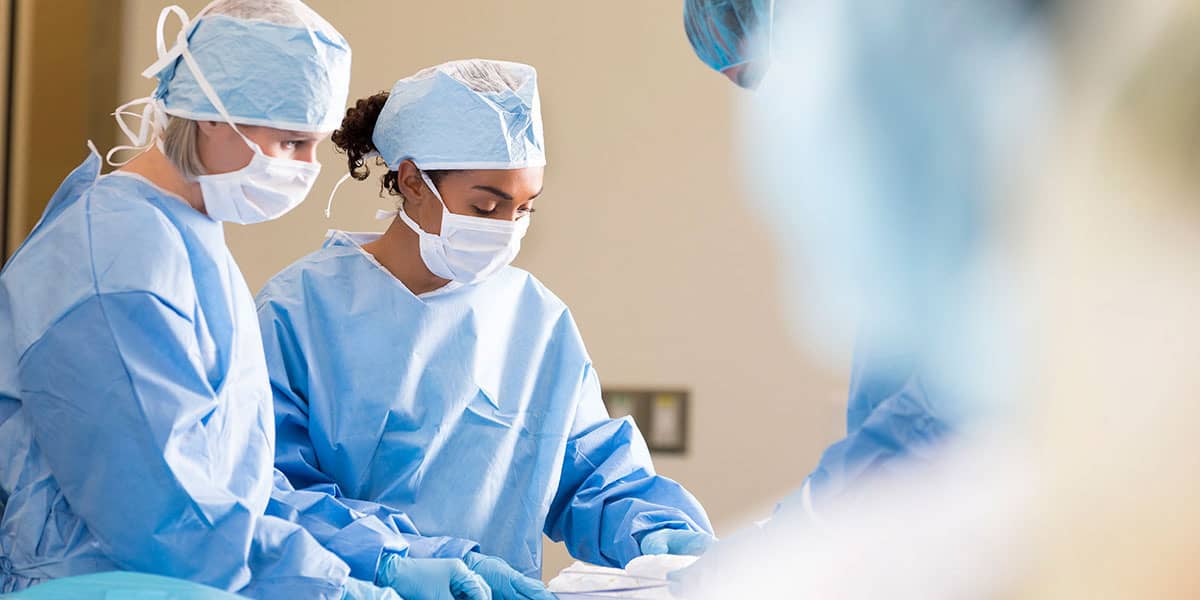Lumbar Procedures
Herniated Disc
A herniated disc, also referred to as a bulging, ruptured or slipped disc, is one that protrudes into the spinal canal and applies pressure to a nerve root. A herniated lumbar disc can cause pain in the back and all the way down the legs and feet. About 90% of herniated discs occur in the lumbar spine. Treatment for a herniated disc includes anti-inflammatory medication, physical therapy and steroid injections. Surgery is not usually required.
Lumbar Spinal Stenosis
As a result of age, intervertebral discs often become less spongy and smaller in height. The decreased support of these discs can cause the spinal cord to narrow and compress the surrounding nerves, causing pain and weakness in the lower back and legs. Lumbar spinal stenosis occurs most frequently in older patients, and can be a result of arthritis. This condition can be treated with medications, steroids or physical therapy. More severe conditions often require surgery.
Lumbar Trauma
Trauma to the lumbar spine are usually the result of a fall or motor vehicle accident. Trauma to this area usually causes a compression fracture and the injury most frequently occurs at the thoracolumbar junction. A CT scan, ultrasound or radiograph is often used to determine the result of the trauma and the best treatment option. Treatment depends on the severity and location of the injury but can include pain medication, physical therapy or surgery.
Lumbar Vertebral Tumors
Spinal cord tumors are similar to any other type of tumor. Its cause is unknown but can occur as a primary tumor or as a result of the spread of cancer from another area. Lumbar vertebral tumors can cause lower back pain, loss of sensation, muscle weakness and spasms through the legs and feet. Like other tumors, these must be treated quickly and effectively so they do not spread to other areas. Corticosteroids can help relieve symptoms but surgery, radiation or chemotherapy may be necessary to remove the tumor.
Lumbar Deformity
Spinal deformities usually appear in the form of curves in the spine. They can be a result of a birth defect, trauma or other spine disease such as scoliosis. Treatment for spinal deformities can include medication, a spinal brace, physical therapy or surgery.
Treatments
We take great care in treating our patients with lumbar spine disorders. We are proud to offer the following treatment options:
Lumbar Microdiscectomy
A microdiscectomy is performed to relieve pressure on nerve roots caused by a herniated disc. A microscope is inserted through a tiny incision in the lower back to view the pinched nerve and then remove the portion of the disc that is applying pressure on it.
Lumbar Laminectomy
A lumbar laminectomy also relieves the pressure of a pinched nerve, but does so by removing a portion of the lamina, the bony rim around the spinal canal. This procedure is often used to treat spinal stenosis and disc degeneration. An X-ray is often used to ensure accuracy of this procedure.
Spine Fusion Surgery
Spine fusion is a surgical procedure used to link together vertebrae, often because of a damaged disc. During surgery, bone growth is stimulated and then used to link the vertebrae together to stop the painful movement in the area.
Lumbar Disc Replacement
A lumbar disc replacement is a relatively new procedure for treating lower back pain and relieving herniated and degenerated discs. Disc replacement is offered as an alternative to spine fusion surgery which causes limited movement and more stress on the back. This procedure replaces the damaged disc with a more natural implant that allows for more fluid motion in the affected area.
We also provide treatment for lumbar spinal tumors, deformities and other disorders. Our doctors are specially trained in treating the specific conditions of the lumbar spine. Call today to make an appointment.
For more information, please call Northwest Spine & Pain Surgical Center at 503-694-8600.
